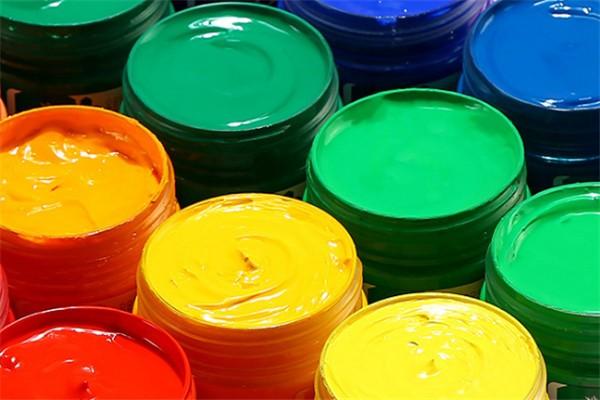Basic classification of pigments/dyes
Pigments/dyes can be divided into two categories based on their chemical composition: inorganic pigments and organic pigments, and their sources can be further divided into natural pigments and synthetic pigments. Natural pigments come from minerals such as cinnabar, laterite, realgar, peacock green, as well as heavy calcium carbonate, wollastonite, barite powder, talc powder, mica powder, kaolin, and so on. Based on biological sources, such as those from animals: cochineal vermilion, natural fish scale powder, etc; Plants include: Vine yellow, Alizarin red, indigo, etc. Synthetic pigments are artificially synthesized, including inorganic pigments such as titanium dioxide, lithopone white, lead chromium yellow, iron blue, as well as organic pigments such as magenta powder, occasional light yellow, phthalocyanine blue, and quinacridone. Classified by the function of pigments, such as rust proof pigments, magnetic pigments, luminescent pigments, pearl pigments, conductive pigments, etc. Color classification is a convenient and useful method. Such pigments can be divided into white, yellow, red, blue, green, brown, purple, and black, regardless of their source or chemical composition. The famous ColorIndex uses a color classification method, such as dividing pigments into ten categories: pigment yellow (PY), pigment orange (PO), pigment red (PR), pigment purple (PV), pigment blue (PB), pigment green (PG), pigment brown (PBr), pigment black (PBk), pigment white (PW), metal pigments (PM), etc. Pigments of the same color are numbered and arranged in order, such as titanium dioxide PW-6, lithopone white PW-5, lead chromium yellow PY-34, quinacridone PR-207, iron oxide red PR-101, phthalocyanine blue PB-101, etc. -15, etc. In order to search for chemical composition, there is another structure number, such as titanium dioxide PW-6C I. 77891, Phthalocyanine blue is PB-15C I. 74160 can enable pigment manufacturers and users to identify the composition and chemical structure of the listed pigments. Therefore, it has been widely adopted in the international pigment import and export trade industry, and some domestic pigment manufacturers have also used the international classification standards for this pigment. The national standard for pigments in China, GB/T3182-1995, also uses color classification. Each color of pigment has a symbol, such as white for BA, red for HO, yellow for HU... Combined with the chemical structure code and serial number to form the pigment model, such as rutile type titanium dioxide BA-01-03, medium chromium yellow HU-02-02, iron oxide red HO-01-01, lithopone white BA-11-01, toluidine red HO-02-01, BGS phthalocyanine blue LA-61-02, etc.

Pigments can be classified according to the types of compounds they contain: inorganic pigments can be further divided into oxides, chromates, sulfates, silicates, borate salts, molybdates, phosphates, vanadates, iron cyanates, hydroxides, sulfides, metals, etc; Organic pigments can be classified according to the chemical structure of compounds, including azo pigments, phthalocyanine pigments, anthraquinone, indigo group, quinacridone, dioxin and other polycyclic pigments, as well as aromatic methane pigments.
From the perspective of production and manufacturing, it can be classified into titanium based pigments, iron based pigments, chromium based pigments, lead based pigments, zinc based pigments, metal pigments, and organic synthetic pigments. This classification method has practical significance, and often a system can represent a professional pigment production industry.
From an application perspective, it can be classified into pigments for coatings, inks, plastics, rubber, ceramics and enamel, pharmaceuticals and cosmetics, art, and so on. Various specialized pigments have unique properties to meet application requirements. Pigment manufacturers can also recommend a series of pigment products to professional users with targeted recommendations.

